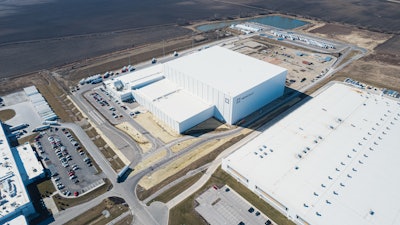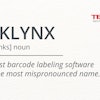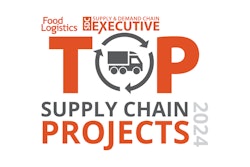
Over the years, executing a risk mitigation plan has transformed from something that’s nice to have to something that every company must have, at all times, in all facets of the organization.
From the influx of cargo theft, cybersecurity threats, food safety and driver shortage to geopolitical tensions, strikes from rail/dock workers, natural disasters and more, even the smallest gap can pose serious threat to people, product and plant.
Liken it to the blind leading the blind, getting lost in a maze or driving while blindfolded.
Not being able to see ahead and predict and plan accordingly is what sometimes plagues many of today’s supply chain companies.
That’s why mitigating supply chain threats is of utmost importance heading into 2024.
Marina Mayer, editor-in-chief of Food Logistics and Supply & Demand Chain Executive, talks exclusively with Jonas Swarttouw, EVP and chairman of NewCold North America, details why companies should rethink their supply chains in 2024, with a greater focus on efficiency, resilience and optimization.
CLICK HERE to read the article in full.
Food Logistics: What are some of the cold food chains biggest threats to date? And why?
Jonas Swarttouw: If we sum it all up, the major challenge is complexity. It’s an increasingly complex world. Labor disruptions, trade wars, and real wars, alongside soaring inflation, and increased global uncertainty all make for a heady mix of complex challenges. Alongside this, as the largest food companies continue to grow and consolidate their supply chains become more complex.
Complexity squeezes businesses, to achieve sustainable growth the aim is to reduce or manage that complexity. Stripping out complexity requires a holistic view of your supply chain.
Food Logistics: 2023 saw a lot of instability within the supply chain, such as geopolitical sanctions, natural disasters, inflation, etc. From your vantage point, how do these factors impact/influence the way companies can mitigate supply chain threats?
Swarttouw: These factors have encouraged a rethink of supply chains. They’ve underlined the need to build greater resilience. Alongside a focus on cost efficiency and optimization. They also prove the value of embracing innovation and leveraging automation to ensure a 24/7 always-on approach to operations. And they impact location choices for large-scale, highly automated, warehouses. Consolidation, flexibility, and scalability all become key means for mitigating these threats.
Food Logistics: According to multiple sources, the average value of cargo stolen during reported events in 2023 was $214,104, equivalent to an estimated $223 million in cargo across 1,778 reported theft incidents. What can be accredited to the rise in cargo theft?
Swarttouw: We’ve seen reports of a cost-of-living crisis around the world, and some speculate this is driving up food cargo theft. From our point of view, visibility is key. Using IoT to track and monitor cargo – for location and temperature integrity – is a vital part of the mix of a truly integrated transport network. And helps to mitigate risks.
Food Logistics: Labor disruptions are also substantially higher this year, up 136%, according to Resilinc data. This includes company and site-level strikes, national strikes, layoffs and labor protests, among others. What does this mean for the future of cold food supply chains?
Swarttouw: We see two threads to this, and they wrap around our core philosophy of leveraging automation. Firstly, we see automation creating exciting careers in supply chain for talented people, and that builds in labor loyalty through better career prospects so there’s less volatility. Secondly, we see automation by its very nature reducing the risk of labor disruptions to operations, a risk that is inherent in traditional manual warehouses.
So, you insulate your organization from labor shocks in the warehouse by automating key bottlenecks in your operations, enabling your associates to upskill and develop and take on elevated roles. While you drive efficiency, accuracy, and resilience with smart automation to deliver always-on high-level service.
Food Logistics: What are some things not addressed above that may be pertinent to our readers?
Swarttouw: There are multiple challenges happening on a micro- and macrolevel, making it is easy to lose focus on why your organization exists—to service your customers. It is critical to think beyond the structures and technology, and continuously ensure your organization is aligned on a primary goal of customer service. For us, keeping the bigger picture in focus helps to prioritize what’s most important when challenges arise.
CLICK HERE to read the article in full.




















